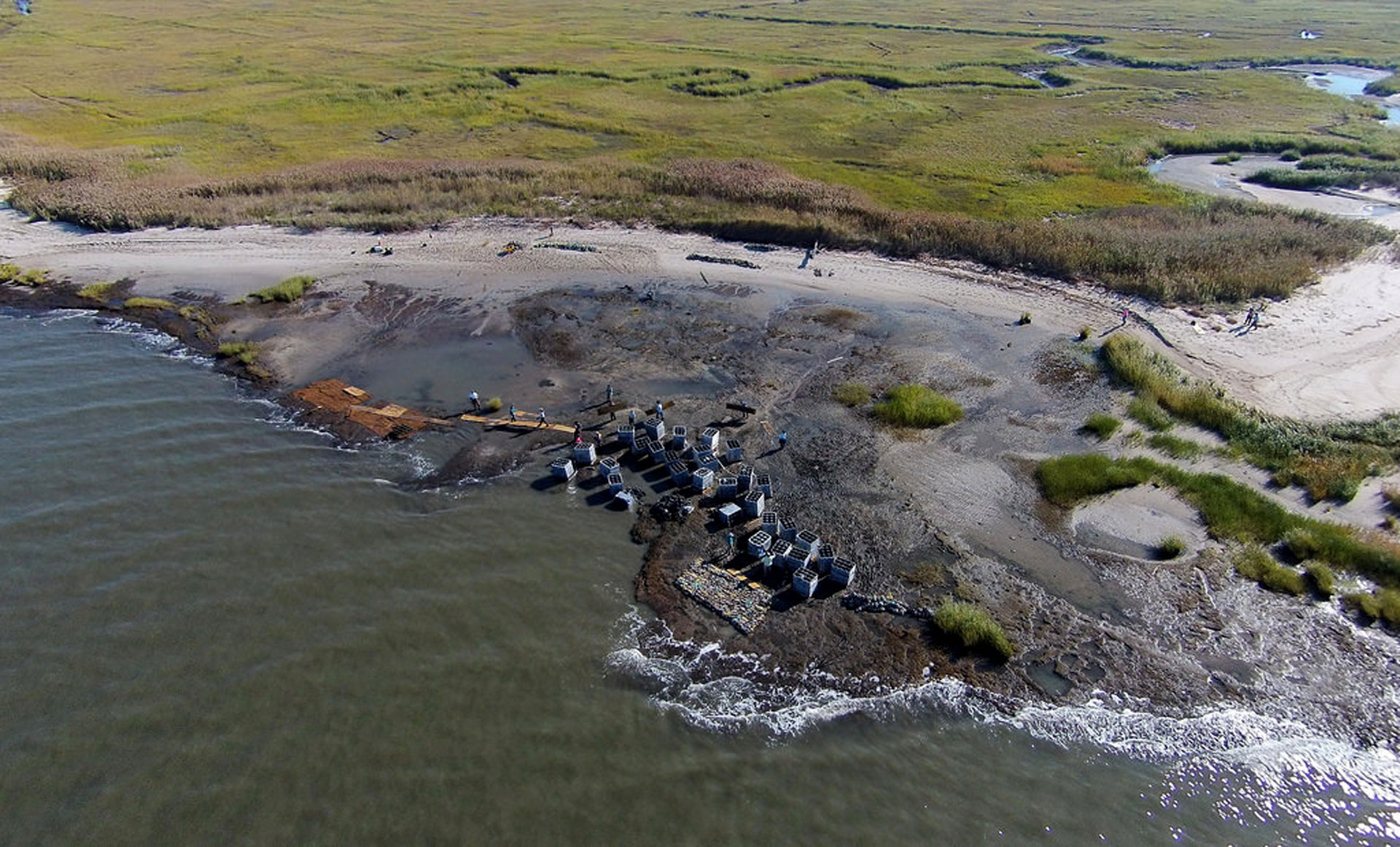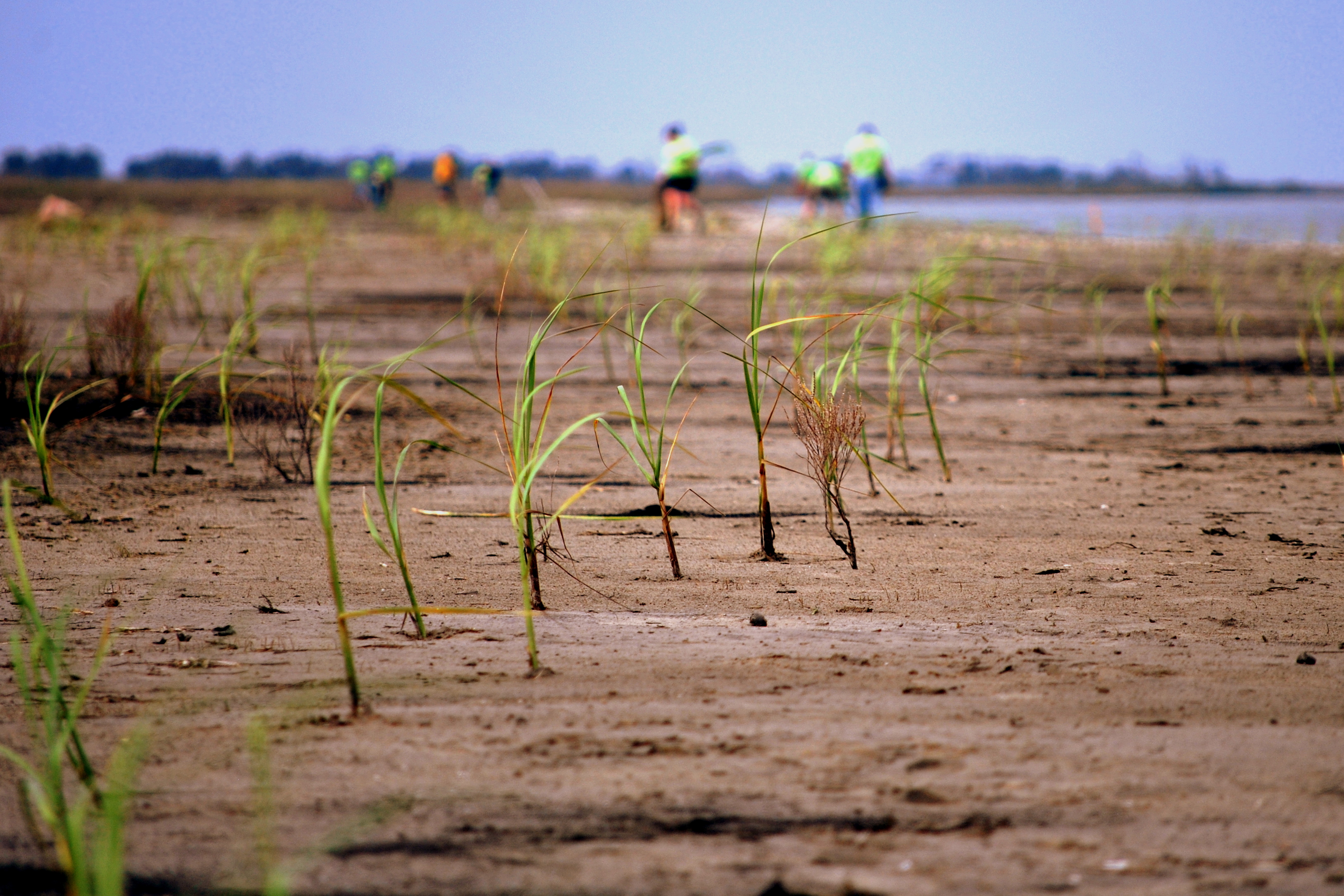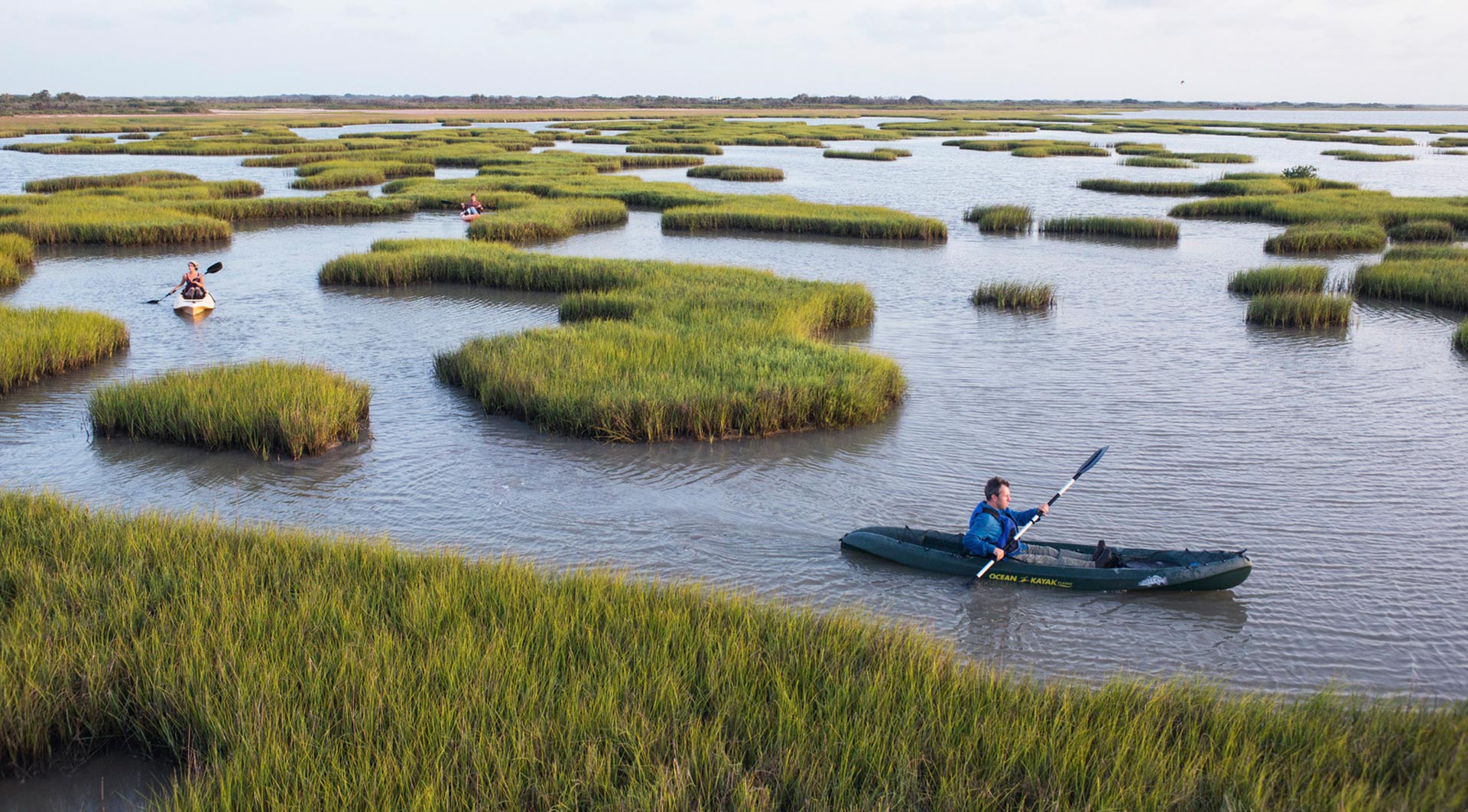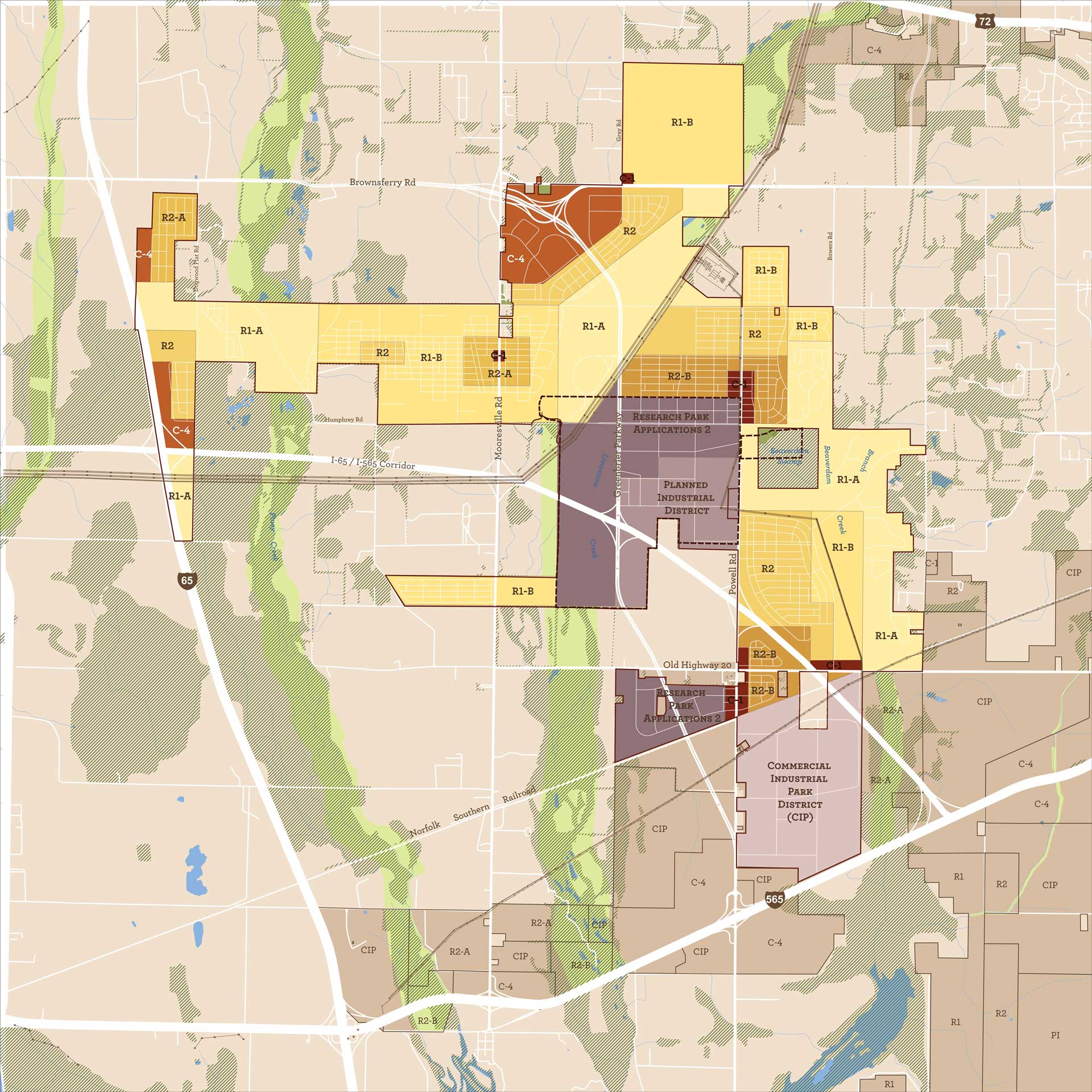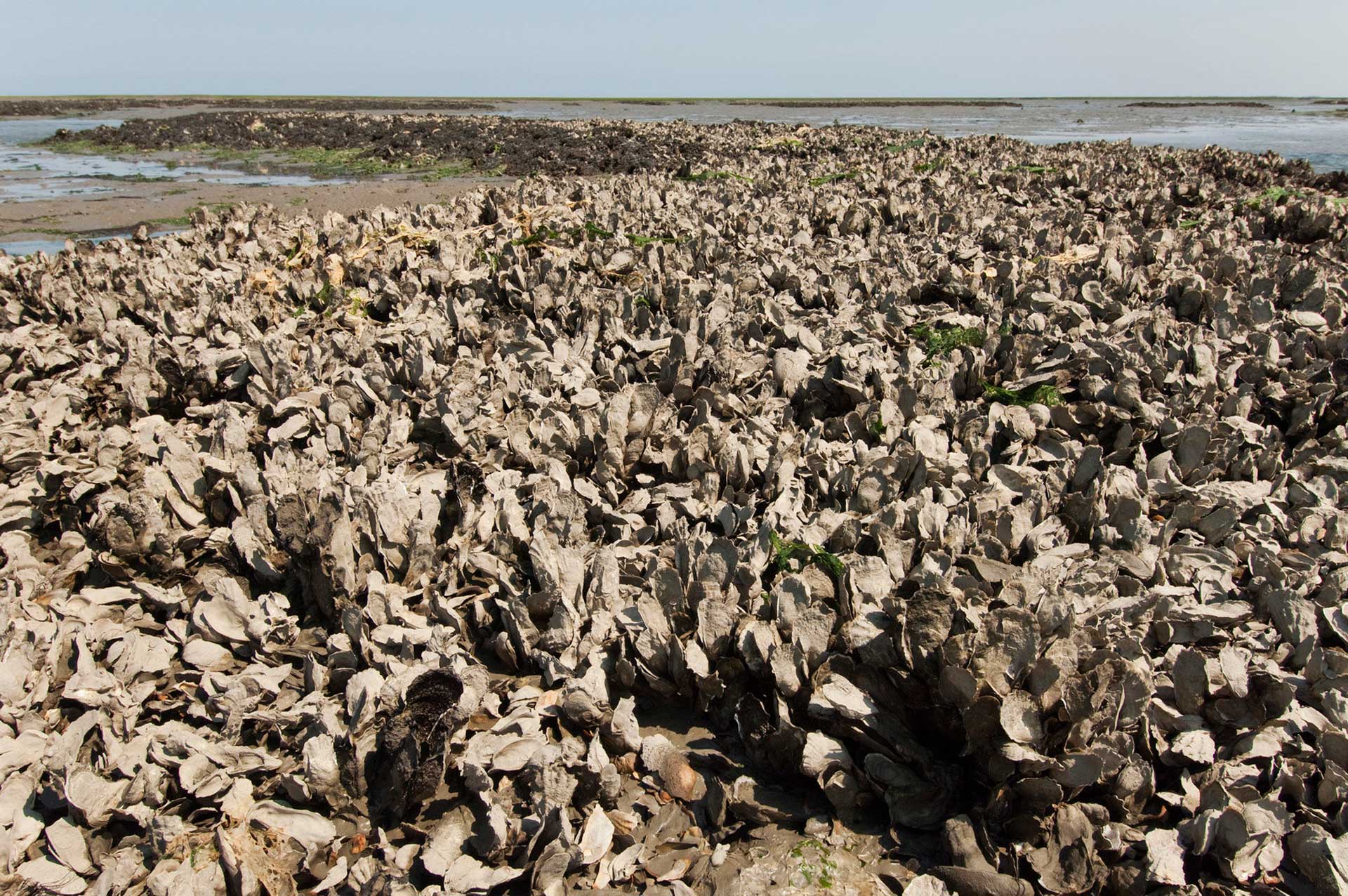Oyster Reefs Eastern Scheldt Pilot Project, Eastern Scheldt, Netherlands
Challenge: Climate change impacts in coastal areas such as sea level rise and increasingly severe storm surge events are gradually demanding greater coastal protection to ensure coastlines become more resilient. Several areas in the Netherlands are built upon reclaimed land (i.e., land reclaimed from the sea), including the Southwest region, which experiences increased risks of flooding and elevated vulnerability to tidal amplitude and ranges.
Project Details
- Location: Eastern Scheldt, Netherlands
- Population: Not informed
- Strategies: Ecosystem creation (oyster reefs)
- Cost: Not informed
- Benefits: Reduce erosion, Biodiversity increase
Overview/History: The tidal basin of the Eastern Scheldt has suffered from severe erosion due to the construction of storm-surge barriers and dams. Taking advantage of the intensive shellfish cultivation culture in the Eastern Scheldt, a pilot project has boosted overall coastal resilience and restore the natural ecosystem through implementing a nature-based solution. The pilot project in the Eastern Scheldt demonstrated the potential of oyster reefs to provide coastal protection against further erosion.
Solution: The project constructed artificial reefs in the intertidal zone of the Eastern Scheldt in front of mudflats, sandy shoals, and salt marshes. The project aimed at verifying the ecosystem as a sustainable solution to address erosion and protect the adjacent ecosystems. The project explored the ability of shellfish and oysters to act as adaptive and responsive structures to keep pace with sea level rise through vertical reef growth. These reef structures can affect sediment deposition patterns, thereby consolidating sediments, assisting with limiting coastal erosion due to wave attenuation, and stabilizing the shoreline.
In 2008, oyster shells were confined within gabions and deployed on the Eastern Scheldt’s tidal flat, forming a substrate of oyster shells. Initially, the pilot project placed a small patch of oyster reefs (40m²). Later on, in 2010, three additional reefs were built with 1,600 – 2,000m² coverage in total. The results indicated a successful growth of the reef through the attaching of new oyster larvae to the existing reefs. Each reef presented slightly different results, but general local sedimentation and wave attenuation were observed. However, further research is required to understand the longevity of oyster reefs in medium to high-energy environments. In order to determine the economic benefits arising from such nature-based approach to the coastal communities, it is necessary to sort out its uncertainties regarding upscaling.
Funding/Financing: The main stakeholders involved in the project included EcoShape, IMARES, NIOZ (former NIOO-CEME), Deltares, Rijkswaterstaat (WINN, Zeeland), Van Oord, and TUD. The cost of the project was not disclosed.
Benefits: The project delivered benefits such as reduction of erosion and shoreline stabilization through sediment trapping and wave attenuation; and enhancing biodiversity by providing a hard substrate habitat in a sandy area. Furthermore, it was a valuable project to gather knowledge on the usage of oyster reefs for coastal protection against erosion, becoming a reference of a nature-based approach.
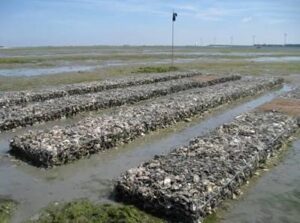
Small-scale pilot on a salt marsh area. Source: https://www.ecoshape.org/en/cases/shellfish-reefs-as-shoreline-protection-eastern-scheldt-nl/construction-phase/

Construction of large-scale oyster reefs. Source: https://www.ecoshape.org/en/cases/shellfish-reefs-as-shoreline-protection-eastern-scheldt-nl/construction-phase/
References:
Shellfish reefs as shoreline protection – Eastern Scheldt. Source: https://www.ecoshape.org/en/cases/shellfish-reefs-as-shoreline-protection-eastern-scheldt-nl/
Oyster reefs. Source: https://www.ecoshape.org/en/pilots/oyster-reefs/
Can we enhance ecosystem-based coastal defence by connecting oysters to marsh edges? Analysing the limits of oyster reef establishment. Source: https://doi.org/10.1016/j.ecoleng.2021.106221
Coastal communities face greater threat of flooding due to land reclamation. Source: https://www.cam.ac.uk/research/news/coastal-communities-face-greater-threat-of-flooding-due-to-land-reclamation#:~:text=Land%20reclamation%20along%20the%20shoreline,walls%20and%20other%20defence%20structures.
ave attenuation; and enhancing biodiversity by providing a hard substrate habitat in a sandy area. Furthermore, it was a valuable project to gather knowledge on the usage of oyster reefs for coastal protection against erosion, becoming a reference of a nature-based approach.
